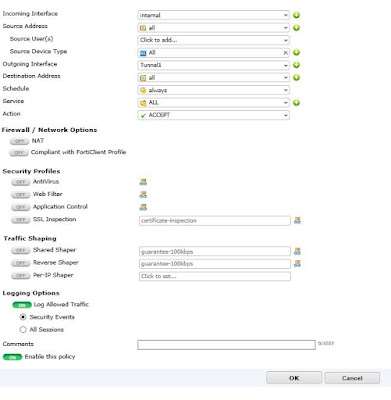Hyper-V replication is an essential
‘server availability’ tool for any organization. Whilst it is not a substitute
for good backups; it will allow you to restore an up-to-date copy of your
virtual servers very quickly, should your primary host hardware fail.
In this tutorial, i have built two
Windows 2012 R2 servers using a pair of old Dell Optiplex 580’s (AMD Phenom
CPU, upgraded to 8GB RAM each), and a single 8 port Netgear GB switch.
The Primary server name is: Truro
The Secondary server name is: Exeter
Lets get started…
Step 1: Build your host servers
- Build two physical host servers – they need to be
running 2012 R2 (or server 2012, which has less functionality)
- Install the Hyper-V role.
- Make sure both servers are fully patched though Windows
update.
- See if any of the Hyper-V
hotfixes apply to your situation
Step 2: Download Makecert
Step 3: Prepare the server
directories
On both servers, make the following
file structure:
C:\makecert
C:\makecert\copy
C:\makecert\import
Copy makecert.exe to c:\makecert on
both servers
Step 4: Making the certificates
Using an admin command prompt
Run on the Primary Server:
c:\makecert\makecert -pe -n
“CN=PrimaryTestRootCA” -ss root -sr LocalMachine -sky signature -r c:\makecert\PrimaryTestRootCA.cer
c:\makecert\makecert -pe -n
“CN=TRURO” -ss my -sr LocalMachine -sky exchange -eku
1.3.6.1.5.5.7.3.1,1.3.6.1.5.5.7.3.2 -in “PrimaryTestRootCA” -is root -ir
LocalMachine -sp “Microsoft RSA SChannel Cryptographic Provider” -sy 12
c:\makecert\PrimaryTestCert.cer
reg add
“HKLM\SOFTWARE\Microsoft\Windows NT\CurrentVersion\Virtualization\Replication”
/v DisableCertRevocationCheck /d 1 /t REG_DWORD /f
Run on the Replica Server:
c:\makecert\makecert -pe -n
“CN=ReplicaTestRootCA” -ss root -sr LocalMachine -sky signature -r c:\makecert\ReplicaTestRootCA.cer”
c:\makecert\makecert -pe -n
“CN=EXETER” -ss my -sr LocalMachine -sky exchange -eku
1.3.6.1.5.5.7.3.1,1.3.6.1.5.5.7.3.2 -in “ReplicaTestRootCA” -is root -ir
LocalMachine -sp “Microsoft RSA SChannel Cryptographic Provider” -sy 12
C:\makecert\ReplicaTestCert.cer
reg add
“HKLM\SOFTWARE\Microsoft\Windows NT\CurrentVersion\Virtualization\Replication”
/v DisableCertRevocationCheck /d 1 /t REG_DWORD /f
Step 5: Export the certificates
On both the primary and replica
servers
Launch an MMC
click File > Add/Remove Snap-in…
In the Add or Remove Snap-ins
window, select Certificates from the Available Snap-ins list;
Click Add >; the Certificates
snap-in window will appear;
In the Certificates snap-in window,
click the Computer account radio button; click Next to continue;
In the Select Computer window, make
sure the Local computer radio button is clicked; then click Finish;
In the Add or Remove Snap-ins
window, click OK.
In the Microsoft Management Console
on the primary server, expose the contents of Certificates (Local Computer),
which can be found under the Console Root directory:
Expose the contents of the Personal
directory; click the Certificates directory;
Right-click on the Truro certificate
– PrimaryTestRootCA.cer; in the context menu that appears, mouse over All Tasks
>; In the sub-menu that appears, click Export…
In the wizard, click next
In the Certificate Export Wizard
that appears, click the Yes, Export the private key radio button and click
Next;
Check and click next
Enter a password, click next
Export the key to to
c:\makecert\copy\truroserver.pfx
Click finish
click ok
Repeat the above steps for the
Replica server (Exeter).
Step 6: Import the certificates
On the primary server (Truro)
Copy the:
PrimaryTestCert
PrimaryTestRootCA.cer
TruroServer.pfx file you just
created
To the replica servers (Exeter)
c:\makecert\import directory
On the replica server (Exeter)
Copy the:
ReplicaTestCert
ReplicaTestRootCA.cer
ExeterServer.pfx file you just
created
To the replica servers (Truro)
c:\makecert\import directory
This is what you should now see on
your Primary server (Truro):
run in admin cmd on Primary Server
certutil -addstore -f Root
C:\makecert\import\ReplicaTestRootCA.cer
In the MMC on the primary server,
make sure your still in Certificates (Local Computer)
Personal directory;
On the wizard that appears, click
next.
Navigate and select the exeterserver.pfx
file (you’ll need to select the dropdown menu to all items before it will
appear).
Enter the password you set during
the export
Click next
Click finish
Click ok.
Repeat for the Replica server
(summary below):
run in admin cmd on Replica Server
certutil -addstore -f Root
C:\makecert\import\PrimaryTestRootCA.cer
In the MMC on the replica server,
make sure your still in Certificates (Local Computer)
Personal directory;
Right click on Personal directory,
mouse over All Tasks >; in the submenu that appears, click Import…;
Locate the TruroServer.pfx file.
enter the password (as per the export section)
Step 7: Configuring Hyper-V
replication
On both primary and replica servers:
In Hyper-V manager, right click on
the host server and select Hyper-V settings.
Select Replication Configuration
Enabled as a Replica Server
Check the box – Enable this computer
as a replica server
Select Use certificate-based
Authentication (HTTPS)
Select the Allow replication from
any authenticated server check box.
Then choose “Select Certificate…”
Make sure Truro is selected.
On the next screen, click ok.
Step 8: Check the firewall settings
Check the firewall rules are
configured to allow hyperv replication. (Control Panel, Windows Firewall,
Advanced). – both should have green ticks (if not, right click and enable).
Repeat on the replica server.
Step 9: Configuring the VM
Configure replication on the VM
(right click, enable replication)
In the wizard, click next
Enter the name of the replica server
(ie Exeter)
Select Certificate
Select the vhds you wish to
replicate (you may wish to exclude swap partition drives if you have those configured)
Choose the replication frequency (30
seconds, 5 minutes or 15 minutes).
choose whether you need any recovery
points (useful if you need to roll back the server to a previous state).
you may wish to seed the initial
replica if your working on slow links.
Review and confirm
Step 10: Checking replication status
and health
Primary server status: Normal
Right click on the VM – select view
replication health
Replication should be normal
They’re you go…. Hyper-V replication
configured between two workgroup computers.

















